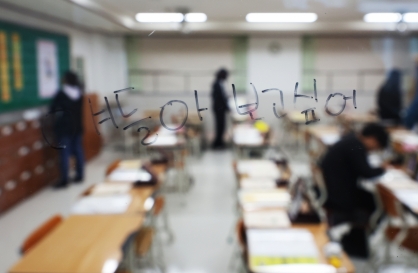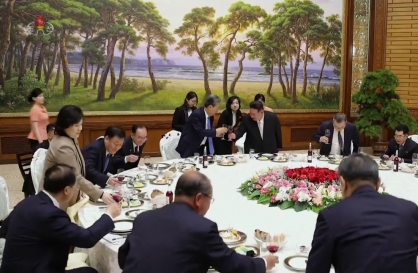Nearly 400 empty school buildings, chiefly in rural areas, are sitting idle after closing their doors due to lack of students, government data showed Tuesday.
The Ministry of Education has a thorny task of giving new life to abandoned classrooms.
As of May last year, a total of 3,855 schools have closed across South Korea in nearly 40 years since 1982, according to data compiled by the Ministry of Education, as the number of students declined to just 60.3 percent of 1990 levels.
The data on the current status of closed schools show that 64.6 percent of all shuttered schools, or 2,491, were sold while 354 were being used as youth training facilities by city or provincial offices. The number of school buildings that have been rented out stood at 617.
Of 393 schools sitting idle in 17 cities and provinces, South Gyeongsang Province saw the largest number of unused vacant school buildings – 91, followed by South Jeolla Province (89), North Gyeongsang Province (63), Gangwon Province (45). Seoul and Gyeonggi Province had two and 16 schools, respectively.
Many attempts to take unwanted school buildings off its hands ended in failure as local residents, who contributed to the creation of the schools by donating family-owned plots, oppose their sales to private companies, an official at Gyeongnam Provincial Office of Education said.
“They hope that local governments will buy vacant schools to transform them into something that serves their town and community,” he said, adding that the average price for school land and buildings in the province amount to over 1 billion won ($842,000).
As the use of the school buildings are limited to certain purposes by law to such as those tied to education, social welfare, culture, public sports facilities and those designed to increase the wealth of local residents, municipal and provincial governments struggle to come up with ideas what to do with them.
Here’s a list of empty school buildings that have undergone or are planned to undergo a unique makeover to attract tourists and contribute to local communities.
Tongyoung Cat School
The Ministry of Education has a thorny task of giving new life to abandoned classrooms.
As of May last year, a total of 3,855 schools have closed across South Korea in nearly 40 years since 1982, according to data compiled by the Ministry of Education, as the number of students declined to just 60.3 percent of 1990 levels.
The data on the current status of closed schools show that 64.6 percent of all shuttered schools, or 2,491, were sold while 354 were being used as youth training facilities by city or provincial offices. The number of school buildings that have been rented out stood at 617.
Of 393 schools sitting idle in 17 cities and provinces, South Gyeongsang Province saw the largest number of unused vacant school buildings – 91, followed by South Jeolla Province (89), North Gyeongsang Province (63), Gangwon Province (45). Seoul and Gyeonggi Province had two and 16 schools, respectively.
Many attempts to take unwanted school buildings off its hands ended in failure as local residents, who contributed to the creation of the schools by donating family-owned plots, oppose their sales to private companies, an official at Gyeongnam Provincial Office of Education said.
“They hope that local governments will buy vacant schools to transform them into something that serves their town and community,” he said, adding that the average price for school land and buildings in the province amount to over 1 billion won ($842,000).
As the use of the school buildings are limited to certain purposes by law to such as those tied to education, social welfare, culture, public sports facilities and those designed to increase the wealth of local residents, municipal and provincial governments struggle to come up with ideas what to do with them.
Here’s a list of empty school buildings that have undergone or are planned to undergo a unique makeover to attract tourists and contribute to local communities.
Tongyoung Cat School

Old Hansan Elementary Yongho Branch School in Tongyeong, located on the southern coast of South Korea, will be converted into a cat shelter. Classrooms will be used to accommodate stray and feral cats and to facilitate their adoption into permanent homes.
Officials expect that local income will increase by hiring veterinarians and other resident employees and sell cat-related products there. The cat school will open in April.
Samcheok Miro Garden
Officials expect that local income will increase by hiring veterinarians and other resident employees and sell cat-related products there. The cat school will open in April.
Samcheok Miro Garden
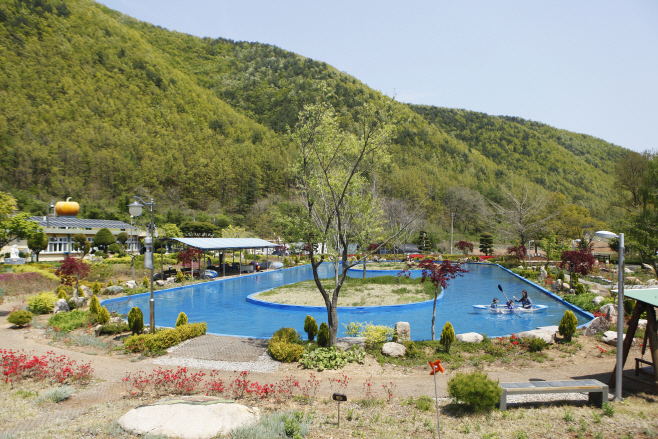
The garden was opened in 2017 after Samcheok city bought the plot of the Doota Branch School of Miro Elementary Schools in a bid to galvanize the village community.
Located near the East Sea and the foot of Dutasan Mountain, the garden is comprised of tofu and wild flower experience centers and a tavern-style restaurant as well as a cafe. Visitors can enjoy canoeing in a shallow pool located in the park, where they can also ride sleds in the winter season.
The Deokpojin Museum of Education
Located near the East Sea and the foot of Dutasan Mountain, the garden is comprised of tofu and wild flower experience centers and a tavern-style restaurant as well as a cafe. Visitors can enjoy canoeing in a shallow pool located in the park, where they can also ride sleds in the winter season.
The Deokpojin Museum of Education
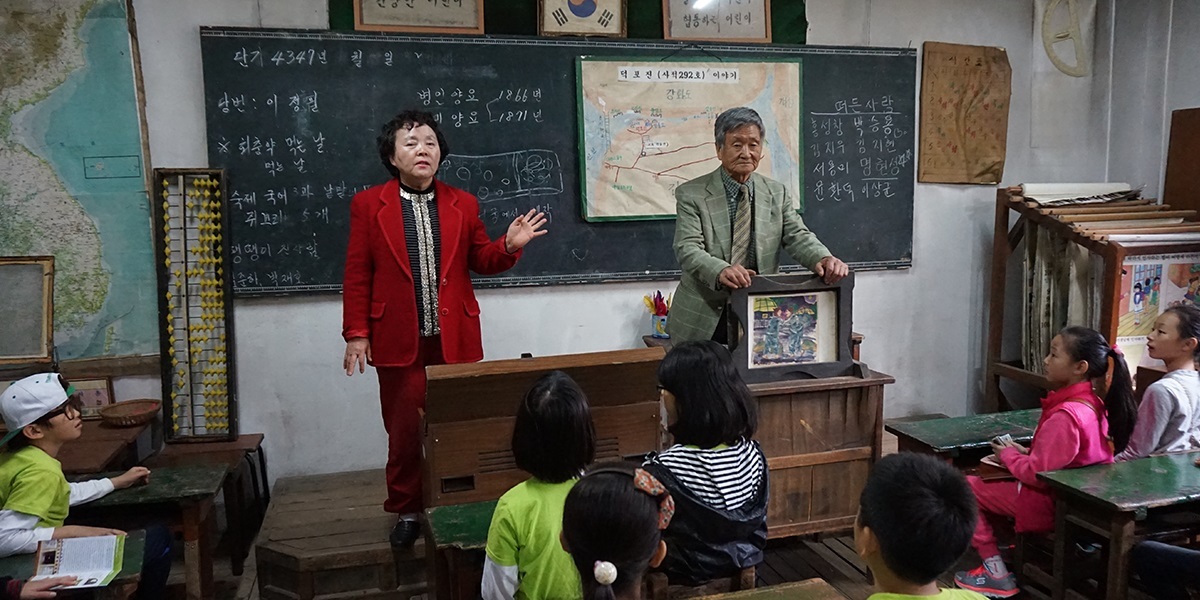
The Deokpojin Education Museum, located in Gimpo, Gyeonggi Province, is a private museum established by retired teacher Kim Dong-sun for his wife Lee In-sook, who lost her sight due to a car accident while working as a primary school teacher.
Kim founded the museum with his retirement grant as Lee fell into despair from not being able to teach students.
The museum attracts many visitors as well as students and families by rekindling nostalgic memories of childhood with Lee running music classes with her reed organ in an old classroom.
More than 1,000 pieces of educational materials from late period of Joseon, the Japanese colonial period and modern times are displayed.
Book Village Haeri
Kim founded the museum with his retirement grant as Lee fell into despair from not being able to teach students.
The museum attracts many visitors as well as students and families by rekindling nostalgic memories of childhood with Lee running music classes with her reed organ in an old classroom.
More than 1,000 pieces of educational materials from late period of Joseon, the Japanese colonial period and modern times are displayed.
Book Village Haeri
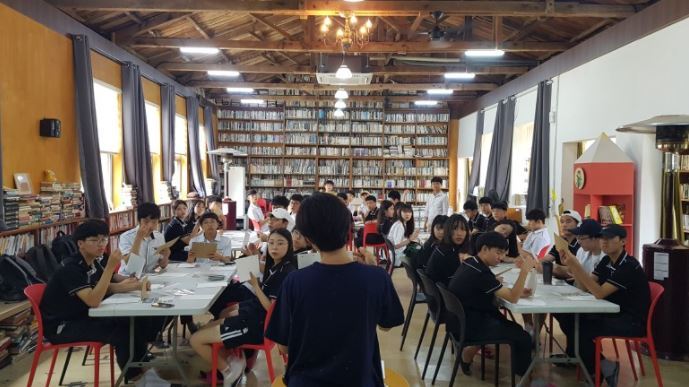
A closed school in Gochang, North Jeolla Province, was converted into a giant library where visitors can go beyond reading a book to experience the process of writing and publishing.
The center encourages visitors to write a book after experiencing the ecology, culture, history and art of Gochang such as salt fields, dolmens and pansori.
Since its opening in 2006, the center has published 100 books through various programs including a poet school, cartoon school and publishing camp.
The center encourages visitors to write a book after experiencing the ecology, culture, history and art of Gochang such as salt fields, dolmens and pansori.
Since its opening in 2006, the center has published 100 books through various programs including a poet school, cartoon school and publishing camp.


